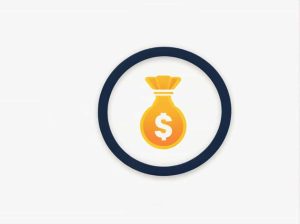Stagflation is an economic phenomenon where high inflation slow economic growth and high unemployment occur simultaneously. This combination is particularly difficult for policymakers to address because traditional economic tools often worsen one problem while trying to fix another.
The United States experienced its most severe stagflation during the 1970s a decade marked by oil crises rising prices and economic stagnation. In this topic we’ll explore the causes key events and impact of stagflation in the U.S. as well as how it was eventually overcome.
1. Understanding Stagflation
1.1 What Is Stagflation?
The term stagflation is a combination of two words:
- Stagnation – Slow or no economic growth.
- Inflation – Rising prices of goods and services.
Normally inflation occurs when an economy is growing rapidly and unemployment is low. However stagflation is unusual because it combines inflation with high unemployment and slow economic growth making it a major challenge for economists.
1.2 Why Is Stagflation a Problem?
Stagflation is dangerous because the usual methods to fight inflation (raising interest rates reducing government spending) can make unemployment and economic stagnation worse. On the other hand stimulating the economy through lower interest rates and increased spending can worsen inflation.
2. The Stagflation Crisis of the 1970s
2.1 What Caused Stagflation in the U.S.?
Several factors contributed to stagflation in the 1970s including:
- Oil Crises (1973 & 1979) – The Organization of the Petroleum Exporting Countries (OPEC) cut oil supplies to the U.S. causing oil prices to skyrocket. This led to higher costs for businesses and consumers.
- Loose Monetary Policy – The Federal Reserve had kept interest rates low in the late 1960s fueling inflation.
- Government Spending – High government spending during the Vietnam War and Great Society programs led to a budget deficit increasing inflation.
- Declining Productivity – U.S. industries struggled with efficiency leading to slower economic growth while wages and prices continued to rise.
2.2 The First Oil Shock (1973-1974)
- In 1973 OPEC imposed an oil embargo on the U.S. in response to its support for Israel in the Yom Kippur War.
- Oil prices quadrupled causing energy costs to rise across all industries.
- Inflation surged past 12% and unemployment rose leading to economic turmoil.
2.3 The Second Oil Shock (1979-1980)
- The Iranian Revolution in 1979 caused another spike in oil prices worsening inflation.
- The U.S. economy fell into a deep recession as businesses and consumers struggled with rising costs.
- By 1980 inflation had hit 14.8% while unemployment climbed to 7.5%.
2.4 The “Misery Index”
During this period economists used the Misery Index which combines the inflation rate and unemployment rate to measure economic distress. In the late 1970s the Misery Index reached an all-time high showing the severity of stagflation.
3. How Stagflation Affected the U.S. Economy
3.1 Economic Hardships
- High consumer prices made everyday goods like food gasoline and housing less affordable.
- Businesses struggled with high production costs leading to job losses and lower wages.
- The stock market performed poorly as investors feared continued economic stagnation.
3.2 Wage-Price Spiral
Workers demanded higher wages to keep up with inflation but businesses passed these costs to consumers by raising prices further creating a cycle that kept inflation high.
3.3 Impact on Government Policies
The government faced a dilemma:
- Raising interest rates would help fight inflation but increase unemployment and recession risks.
- Lowering interest rates would stimulate the economy but worsen inflation.
4. How the U.S. Overcame Stagflation
4.1 Paul Volcker’s Monetary Policy
In 1979 President Jimmy Carter appointed Paul Volcker as Chairman of the Federal Reserve. Volcker took drastic steps to combat stagflation including:
- Raising interest rates aggressively – The Fed increased rates to over 20% to curb inflation.
- Reducing the money supply – Tightening monetary policy slowed price increases.
4.2 Short-Term Pain Long-Term Gain
- Volcker’s policies led to a severe recession (1981-1982) with unemployment hitting 10.8%.
- However inflation dropped significantly reaching 3.8% by 1983.
- By the mid-1980s the economy stabilized and stagflation ended.
4.3 The Role of Supply-Side Economics
During the Reagan Administration economic policies focused on:
- Tax cuts to encourage investment and job growth.
- Deregulation to reduce government intervention in businesses.
- Increased defense spending to boost the economy.
These policies combined with Volcker’s efforts helped the U.S. transition from stagflation to sustained economic growth in the 1980s.
5. Could Stagflation Happen Again?
5.1 Similarities to Today’s Economy
Some economists warn that stagflation could return due to factors such as:
- Supply chain disruptions – The COVID-19 pandemic caused shortages raising prices.
- Energy price volatility – Geopolitical conflicts and policies affecting oil production.
- High government debt – Large stimulus packages increasing money supply.
5.2 Key Differences from the 1970s
- Better monetary policy tools – The Federal Reserve now has more experience in controlling inflation.
- Technological advancements – Productivity improvements can help offset inflationary pressures.
- Globalized economy – Increased trade and competition keep inflation more stable.
The U.S. experienced its worst stagflation in the 1970s caused by oil crises poor monetary policy and economic stagnation. It led to high inflation rising unemployment and economic hardship for millions of Americans.
Through aggressive interest rate hikes and economic reforms stagflation was eventually defeated by the early 1980s. While concerns about stagflation exist today stronger economic policies and technological advancements make a repeat of the 1970s crisis less likely.
Understanding the history of stagflation helps policymakers and businesses prepare for economic challenges and develop better strategies for sustainable growth in the future.



